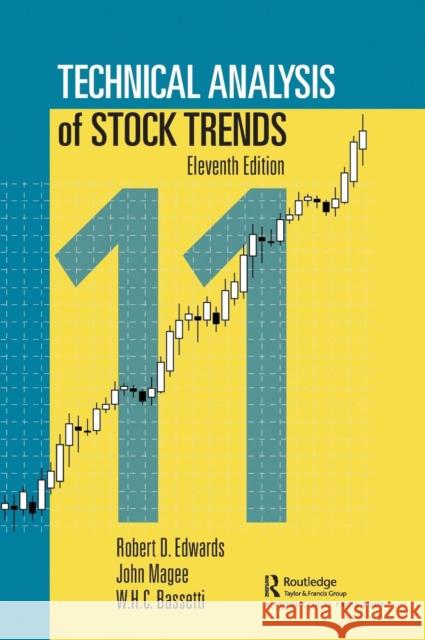Technical Analysis of Stock Trends » książka



Technical Analysis of Stock Trends
ISBN-13: 9781138069411 / Angielski / Twarda / 2018 / 686 str.
Technical Analysis of Stock Trends
ISBN-13: 9781138069411 / Angielski / Twarda / 2018 / 686 str.
(netto: 447,80 VAT: 5%)
Najniższa cena z 30 dni: 468,26
ok. 22 dni roboczych
Dostawa w 2026 r.
Darmowa dostawa!
Revised edition of the authors' Technical analysis of stock trends, c2013.
Wydanie ilustrowane
Part I: Technical theory 1. The technical approach to trading and investing 2. Charts 3. The Dow Theory 4. The Dow Theory’s defects 5. Replacing Dow Theory with John Magee’s Basing points Procedure 6. Important Reversal Patterns 7. Important Reversal Patterns: continued 8. Important Reversal Patterns: the Triangles 9. More important Reversal Patterns 10. Other Reversal phenomena 11. Consolidation Formations 12. Gaps 13. Support and Resistance 14. Trendlines and Channels 15. Major Trendlines 16. Technical analysis of commodity charts 17. A summary and concluding comments Part II: Trading tactics 18. The tactical problem 19. The all-important details 20. The kind of stocks we want: the speculator’s viewpoint 21. Selection of stocks to chart 22. Selection of stocks to chart: continued 23. Choosing and managing high-risk stocks: tulip stocks, Internet sector, and speculative frenzies 24. The probable moves of your stocks 25. Two touchy questions 26. Round lots or odd lots? 27. Stop orders 28. What is a Bottom and what is a Top? 29. Trendlines in action 30. Use of Support and Resistance 31. Not all in one basket 32. Measuring implications in technical chart patterns 33. Tactical review of chart action 34. A quick summation of tactical methods 35. Effect of technical trading on market action 36. Automated trendline: the Moving Average 37. The same old patterns 38. Balanced and diversified 39. Trial and error 40. How much capital to use in trading 41. Application of capital in practice 42. Portfolio risk management 43. Stick to your guns
WHC Bassetti is the Editor and Coauthor of the classic reference, Technical Analysis of Stock Trends, 10th Edition, first written by Robert D. Edwards and John Magee in 1948. Mr. Bassetti traded as a student and client of John Magee in the 1960s, beginning a long, distinguished trading career encompassing virtually all of the financial markets, stocks, bonds, options and futures.
In 1972, as a Principal and Vice President of California’s first licensed commodity trading advisor he pioneered computerized trading systems and traded professionally for individual and institutional clients. His company was one of the first to manage capital for Merrill Lynch, Dean Witter et al and he and his partners created and managed some of the first commodity mutual funds.
In 1984 he was appointed CEO of Options Research Inc., a company founded by Blair Hull of Chicago’s Hull Trading Company, formerly the largest market maker on the floor of the CBOE. ORI was one of the first if not the first, companies to computerize the analysis of options and futures. Clients for analytical and portfolio services included Morgan Stanley, First Boston, and Kidder Peabody et al. Mr. Bassetti’s organization managed options arbitrage capital compiling a brilliant record during the market crash of 1987, and traded as a market maker with a seat on the Pacific Stock Exchange.
A graduate of Harvard University and a former NASA systems engineer, Mr. Bassetti is currently Distinguished Adjunct Professor of Finance and Economics at Golden Gate University, San Francisco, Editor of the John Magee Investment Series for St. Lucie Press and a practicing technical analyst.
In spite of his decades of work in computerized trading systems, Mr. Bassetti’s favorite analytical tool remains a ruler, a tool he teaches graduate students and the general public in his monthly 2-1/2 day seminars at Golden Gate University.
1997-2025 DolnySlask.com Agencja Internetowa
KrainaKsiazek.PL - Księgarnia Internetowa









